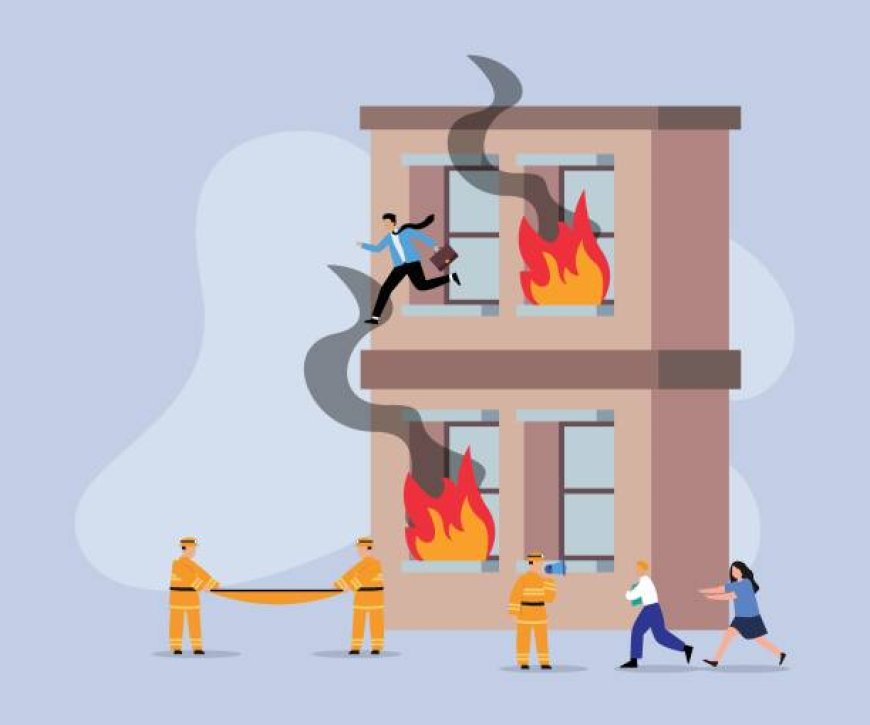Understanding the Common Causes of Fires in Homes and Workplaces
Learn the common causes of fires in homes and workplaces to enhance safety and protect lives and property effectively. Read to learn more

Fires pose serious risks to safety and property, affecting countless homes and businesses annually. This guide highlights common fire hazards and provides practical tips to reduce risks and protect what matters most.
The Importance of Fire Awareness
Why is fire prevention such a vital concern? Fires spread quickly and can escalate from a small flame to a major catastrophe within minutes. Beyond the risks to life and health, fires cause billions of dollars in property damage each year. They disrupt communities, halt operations, and leave lasting impacts. Fortunately, many of the leading causes are avoidable with simple habit changes, maintenance, and planning.
Leading Causes of Fire in Homes
Cooking Accidents
Stovetops, ovens, and even small kitchen appliances top the list as the leading causes of home fires. Unattended cooking is often the main culprit. People step away momentarily and come back to find a pan in flames. Grease fires, which happen when oils overheat and ignite, can escalate quickly and are challenging to put out with water.
How to prevent it:
-
Never leave cooking unattended.
-
Keep flammable objects away from burners.
-
Always have a lid nearby to smother potential fires.
-
Regularly clean burners and range hoods to prevent grease build-up.
Faulty Electrical Systems
Electrical fires in homes typically stem from faulty wiring, overloaded power strips, old appliances, or use of damaged cords. Extension cords and power outlets can become fire hazards if overused or if low-quality products are utilized.
How to prevent it:
-
Replace worn or frayed cords immediately.
-
Avoid overloading electrical outlets.
-
Hire a licensed electrician to inspect wiring regularly, especially in old buildings.
-
Use only certified appliances and devices.
Heating Equipment
Portable heaters, fireplaces, and furnaces bring warmth in cold months, but also pose significant fire risks when misused or neglected. Placement near curtains, bedding, or furniture is especially dangerous.
How to prevent it:
-
Keep all heating equipment at least three feet from anything that burns.
-
Use space heaters with automatic shut-off functions.
-
Schedule regular maintenance checks for fireplaces and heating systems.
-
Never use ovens or stoves to heat your home.
Smoking Indoors
Although smoking is becoming less common indoors, it remains a major source of preventable residential fires. Ashes, butts, and lighters introduced to bedding, couches, or even trash cans have catastrophic potential.
How to prevent it:
-
Always smoke outside when possible.
-
Use sturdy ashtrays and make sure cigarettes are fully extinguished.
-
Never smoke when drowsy, medicated, or in bed.
Candles
Candles set the mood, but they also cause fires when left unattended, or knocked over by children or pets.
How to prevent it:
-
Keep candles on stable, nonflammable surfaces.
-
Put out all candles before leaving a room.
-
Consider flameless LED candles as a safer alternative.
Common Fire Hazards in Workplaces
Electrical Equipment and Machinery
Just like in homes, overloaded circuits, poor wiring, and malfunctioning machines are top threats. Office buildings often house complex electrical setups that demand ongoing monitoring.
How to prevent it:
-
Use only equipment rated for workplace standards.
-
Schedule routine inspections for all wiring and devices.
-
Unplug equipment when not in use.
Flammable Liquids and Chemicals
Manufacturing plants, warehouses, and even small businesses may store flammable chemicals, fuels, or solvents. Improper storage or accidental spills can quickly turn disastrous.
How to prevent it:
-
Store chemicals in labeled, fireproof cabinets away from ignition sources.
-
Maintain clear safety procedures for handling spills.
-
Train staff regularly on proper chemical storage and emergency response.
Human Error
A surprising number of workplace fires spark from carelessness or neglected safety protocols. This can range from propping open fire doors to ignoring warning signs on malfunctioning electrical gear.
How to prevent it:
-
Provide regular fire safety training for all employees.
-
Encourage a culture of safety where everyone reports hazards quickly.
-
Post clear instructions and reminders at key locations within the workplace.
Heating and Kitchen Equipment
Break rooms equipped with microwaves, coffee makers, or toasters introduce kitchen-related hazards into the office. Meanwhile, industrial facilities with boilers, kilns, or heaters face even greater risks.
How to prevent it:
-
Perform regular checks and maintenance on all shared kitchen and heating appliances.
-
Ensure that appliances are turned off at the end of the workday.
-
Store flammable items like paper towels or napkins far from heat sources.
Fire Safety Essentials Everyone Should Practice
Understanding risk is only the beginning. Adopting a few fundamental safety practices can help everyone stay protected at home and at work:
-
Install and test smoke alarms regularly. Replace batteries at least once a year.
-
Keep fire extinguishers accessible with fire extinguisher decorative covers and ensure everyone knows where they are.
-
Develop and practice a fire escape plan for your home or workplace.
-
Never block exits or fire doors.
-
Store matches and lighters out of reach of children.
Concusion
Fire risks can’t be completely eliminated, but awareness and a proactive approach greatly reduce them. Most fires result from preventable mistakes. By addressing common causes and sharing fire safety tips, you can help save lives and protect property.







